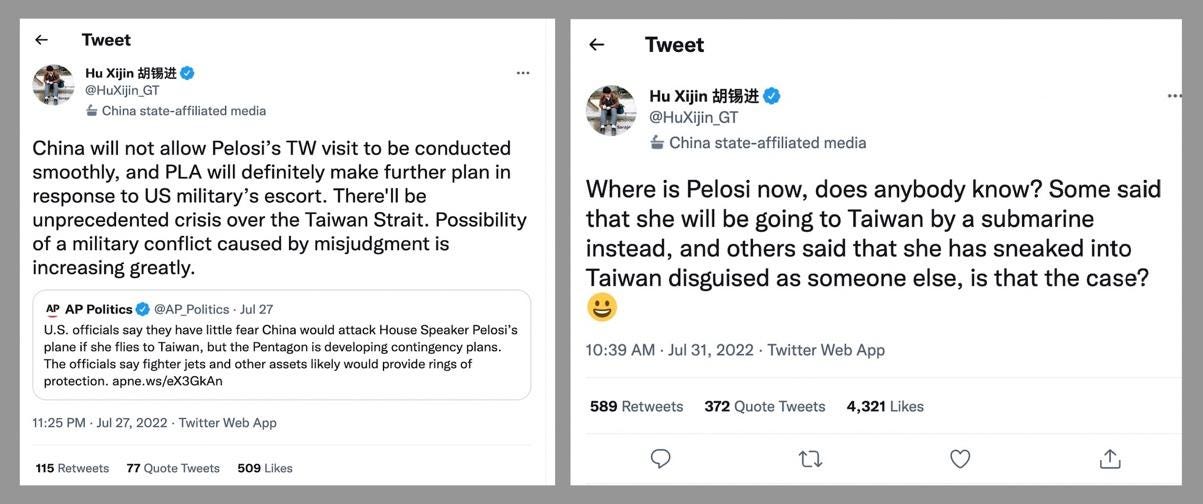China’s Political Discourse August 2022: Pelosi’s “Sneaky Visit” to Taiwan
By China Media Project
From late July to early August, speculation about whether US House Speaker Nancy Pelosi would visit Taiwan captivated discussion on China’s internet, moderated by strict censorship of one of the country’s most sensitive topics. More radical nationalist voices on social media, some with official or quasi-official backgrounds, claimed that the Chinese military would act to prevent Pelosi from reaching Taiwan, even if it meant shooting down her plane.
Among the voices stirring up the sense of impending conflict in both Chinese and English was former Global Times editor-in-chief Hu Xijin, who said in a July 27 tweet, ahead of Pelosi’s arrival, that “there’ll be an unprecedented crisis over the Taiwan Strait.” Two days later, as the moment drew closer, Hu wrote on Twitter that “[if] US fighter jets escort Pelosi's plane into Taiwan, it is invasion.” If this happened, he posted, the People’s Liberation Army would be within its rights to “forcibly dispel” the plane.
Tweets from former Global…

